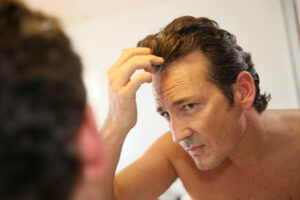Hair loss can be a distressing experience for both men and women. Fortunately, there are several hair restoration procedures available today that can help regain a full and natural head of hair. However, choosing the right procedure can be overwhelming. To make an informed decision, it’s important to consider various factors. In this post, we will explore the key factors you should keep in mind when selecting a hair restoration procedure.
What is Hair Restoration?
Hair restoration refers to the process of regrowing or replacing hair in individuals who are experiencing hair loss or thinning. It involves various techniques and procedures aimed at restoring a full and natural head of hair. Hair restoration can be achieved through both surgical and non-surgical methods, depending on the severity and cause of hair loss.
Surgical hair restoration procedures typically involve the transplantation of hair follicles from donor areas (such as the back or sides of the scalp) to areas of thinning or baldness. The two primary surgical techniques are follicular unit transplantation (FUT), also known as strip harvesting, and follicular unit extraction (FUE). FUT involves removing a strip of scalp from the donor area and dissecting it into individual follicular units for transplantation. FUE, on the other hand, involves extracting individual follicular units directly from the donor area using specialized tools.
Non-surgical hair restoration methods include medications, such as minoxidil (Rogaine) and finasteride (Propecia), which can help slow down hair loss and promote regrowth in some individuals. Additionally, non-surgical procedures like low-level laser therapy (LLLT) and platelet-rich plasma (PRP) therapy are also used to stimulate hair follicles and encourage hair growth.
Factors to Consider When Choosing a Procedure
If you think a hair restoration procedure may be right for you, consider the following factors before choosing a method:
Severity of Hair Loss
Understanding the severity of your hair loss is crucial in determining the most suitable restoration procedure. Different procedures are designed to address specific stages of hair loss, ranging from mild thinning to complete baldness. Consulting with a qualified hair restoration specialist will help you assess the extent of your hair loss and choose an appropriate procedure.
Longevity and Maintenance
Consider the longevity of the results and the maintenance required for each procedure. Some procedures offer permanent results, while others may require regular maintenance or touch-ups. Take into account your lifestyle, budget, and personal preferences when deciding on the level of commitment you are willing to make for your hair restoration.
Safety and Side Effects
Research the safety profile of different hair restoration procedures. Look for FDA-approved treatments and techniques that have been proven to be safe and effective. It’s essential to weigh the potential side effects or risks associated with each procedure and discuss them with your chosen hair restoration professional.
Some potential side effects include:
- Pain and discomfort: Temporary pain and discomfort can occur after the procedure, which can be managed with prescribed pain medications.
- Itching and scarring: Itching is a common side effect during the healing process. In some cases, scarring may occur at the donor or recipient sites, but modern techniques aim to minimize visible scarring.
- Swelling and bruising: It is common to experience some swelling and bruising in the treated areas, especially in surgical procedures like follicular unit extraction or follicular unit transplantation. This usually subsides within a few days or weeks.
- Folliculitis: Inflammation of the hair follicles, known as folliculitis, can occur as a result of irritation or infection. Proper hygiene and care can help prevent this condition.
Natural Appearance
A natural-looking result is often a top priority for individuals seeking hair restoration. Look for procedures that provide natural hair growth patterns, hairline design, and seamless integration with your existing hair. Advanced techniques like follicular unit extraction or follicular unit transplantation can deliver highly natural results when performed by experienced professionals.
Cost and Financing Options
Consider the cost of the procedure, including any additional expenses such as post-operative care or follow-up appointments. Compare the prices of different procedures and inquire about financing options available. Remember that while cost is a factor, it should not be the sole determinant in choosing a hair restoration procedure.
In Conclusion
When it comes to choosing a hair restoration procedure, it’s essential to carefully consider several factors, including the severity of hair loss, longevity, safety, natural appearance, and cost. By weighing these factors, you can make an informed decision that aligns with your goals and preferences.
Contact Eldorado for Maryland Hair Restoration
For quality hair restoration services in Baltimore, look no further than Eldorado. With our team of highly skilled professionals and state-of-the-art techniques, Eldorado offers personalized solutions to help you achieve natural-looking and long-lasting results.
To work with Eldorado for the best hair restoration services in Maryland, contact Eldorado today. Don’t let hair loss hold you back – experience the transformation with Eldorado.





